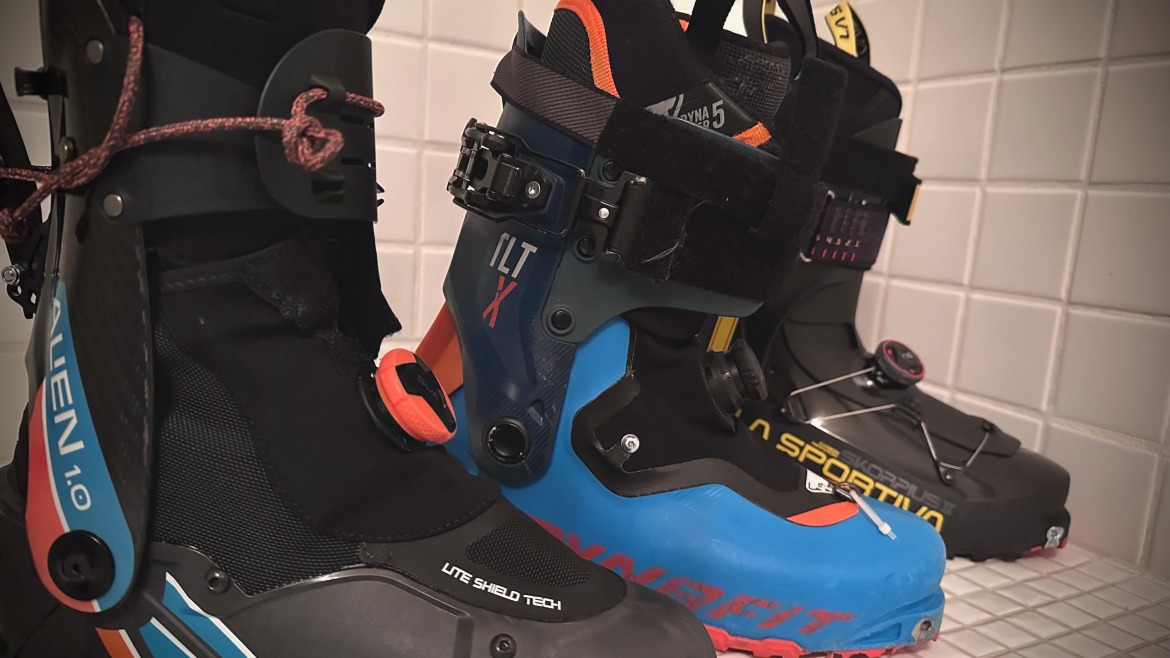
A boot’s range of motion is not some mystical concept. Some do it right, some aspire. Considering your specific needs, the boots in this image land on the do it right side. L-R, Alien 1.0 (yeah kind of specialized), TLT X, and the Skorpius CR II.
Hey readers, we’re looking for basic information and reader input on ski boots, specifically, perceived range of motion (ROM) while skinning, climbing, and hiking. We’re working on a story about such nerdy concepts. Generally, we spend 90% of our backcountry touring time going uphill, so things like ROM matter. (Maybe not in the big Cosmos, but for skintrack efficiency, we are nodding yes.)
Let’s dive into range of motion for a moment. We think of ROM as ski boot cuff articulation. We prefer friction-free pivot/articulation, but physics happens: some boots, most notably those in the speed touring segment, have greater ROM, while beefier boots, think freeride, tend to have more friction and a corresponding smaller ROM. A few things are in play when considering the range of motion. There’s the shell design; does the shell overlap, for example? There’s the liner. Does the liner feature a thick padded tongue or something more minimal? Does the liner feature engineered flex regions?
And then there’s the ski/walk mechanism. Let’s hope this is highly engineered and serves its purpose — to lock the upper and lower boot together to descend and reverse the step when walking.
Further still, some of us compromise ROM willingly on the up-track for a stiffer skiing experience on the downs. Some backcountry skiers want massive ROM no matter what; compromising skiability when descending is part of the agreement.
Let’s get even more granular: binding risers play a part, too, when accommodating for decreased ROM. It goes something like this (which may only apply to some): with lower ROM, some prefer to deploy higher risers more often when the skintrack kicks up. We’ll be asking about risers in the Google Form.
If you have five minutes, we’d love your input by filling out the linked Google Form. We will not be collecting email addresses for participants. Thanks for considering.
You can find the Google Form here too.
— WildSnow
While most of the WildSnow backcountry skiing blog posts are best attributed to a single author, some work well as done by the group.
